


xxxxxThe famous English poet and playwright William Shakespeare probably went to work in London in the late 1580s. By 1603 he was one of the directors of The King’s Men, based at the Globe Theatre at Southwark. His output was phenomenal. As a poet he wrote 154 passionate love sonnets, two long narrative poems, Venus and Adonis, in 1593, and the Rape of Lucrece the following year. As a dramatist he wrote or greatly assisted in the making of 38 plays, and these were highly popular with the general public and at the courts of both Elizabeth I and James I. In his early works, his blank verse was rather stultified, and the action restricted to one theme. To this period belong Henry VI, Richard III, the farces The Comedy of Errors and The Taming of the Shrew, and the bloody revenge tragedy, Titus Adronicus. From the mid-
WILLIAM SHAKESPEARE 1564 -
Acknowledgements
Shakespeare: portrait attributed to the English painter John Taylor (c1585-
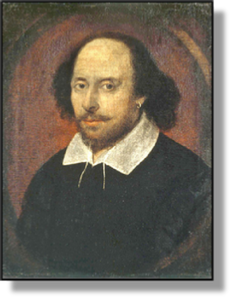 xxxxxWilliam Shakespeare, one of England's most talented playwrights, was born in Stratford-
xxxxxWilliam Shakespeare, one of England's most talented playwrights, was born in Stratford-
xxxxxLittle is known about the next few years, but we are told that by 1592 he was busy in London, working as an actor and playwright. He may well have gone to the capital in the late 1580s to earn more money and, if so, then he certainly achieved his aim. Such was his success that by about 1594 he was a leading member of the Lord Chamberlain's Company of actors, whose number included the leading tragedian of the day Richard Burbage. In 1597 he could afford to buy New Place, one of the largest houses in his home town of Stratford. Two years later the company demolished their regular playhouse, The Theatre, and used much of the timber to construct The Globe on the southern bank of the River Thames at Southwark. By 1603, he was the principal playwright and one of the directors of the company, now renamed The King's Men in honour of the new monarch, James I. By then he owned a large amount of property in both London and Stratford.
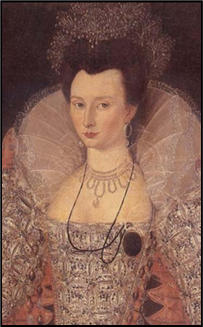
xxxxxShakespeare's stage work can be divided into four broad categories: his lyric plays, such as A Midsummer Night's Dream and Romeo and Juliet; his comedies, including As You Like It and Measure for Measure; his historical plays, notably Henry V and Richard III; and his great tragedies, like Hamlet, Othello and Macbeth. Manyxof the plots and themes for these plays were gleaned from earlier fiction and adapted to suit his purpose, and for his historical works he lent heavily upon the Chronicles of the English historian Raphael Holinshed (c1529-
xxxxxAs a poet he wrote two long narrative poems, both dedicated to his patron the Earl of Southampton; Venus and Adonis in 1593 and The Rape of Lucrece the following year. His passionate love sonnets, a total of 154, were written over a number of years and were published in 1609. Some refer to a fair youth (possibly the Earl of Pembroke) and a mysterious "Dark Lady", who might well have been the object of his desire. She is thought to have been Mary Fitton, the Queen's maid and Pembroke's mistress (illustrated above).
xxxxxThe sheer volume of Shakespeare's production is awe-
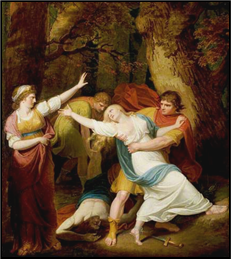
xxxxxThe production of his plays began about 1589, though it is clear that for five or six years after this date he was experimenting with the order of construction and still learning the basic techniques of his trade. At this time, his blank verse was somewhat stultified, and the action was restricted to the one and only theme. To this period belong the plays Henry VI and Richard III, the weak and/or evil leadership of these monarchs designed to contrast with the upright rule of the Tudor dynasty. Among his comedies are the boisterous farces The Comedy of Errors and The Taming of the Shrew, and Love's Labour's Lost, a play that pokes fun at the pretensions of aristocratic society. Also produced at this time was Titus Andronicus (here illustrated), a bloody revenge tragedy, based upon the style of the Roman dramatist Seneca, and clearly influenced by the work of the contemporary dramatist Thomas Kyd.
xxxxxAs from the middle of the 1590s Shakespeare's work began to take on a more individual format and style, marking him out as a playwright of pure genius. His interpretation of character became very much more complex and convincing, his mastery of words and blank verse created a brilliant medium for the whole gambit of human emotion, and his introduction of sub-
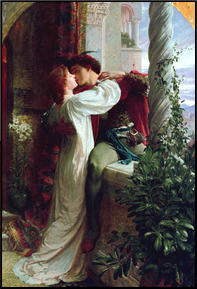
xxxxxBelonging to this later period are a number of sensitive portraits of kingship, including Richard II, Henry IV and Henry V, some highly successful comedies, such as A Midsummer Night's Dream, Much Ado About Nothing, As You Like It, and The Merry Wives of Windsor -
L1-
xxxxxThis brilliant outpouring of plays, brought him to the height of his fame, but by no means to the peak of his achievement. As we shall see, yet to come were the other great tragedies with which Shakespeare's name is for ever remembered: Othello, King Lear, Antony and Cleopatra and Macbeth, produced in 1606 (J1) in honour of his new king James I.
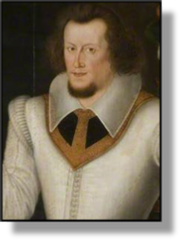 xxxxxIncidentally, Shakespeare had a high regard for the Queen's favourite the Earl of Essex (illustrated), comparing him with the young Henry V in his play of that name, but this friendship almost landed him and his company in serious trouble. Essex, you may recall, having fallen out of favour with Elizabeth and been disgraced, led a rebellion against her in 1601. On the eve of the revolt, staged in London, his supporters, who included the Earl of Southampton, persuaded the company to put on a performance of Richard II. This was a play concerned with the "deposing and killing" of the monarch, and the conspirators doubtless hoped that this would help to stir up the people against the Queen. After the failure of the rebellion and the execution of Essex, the coincidence did not go unnoticed! An inquiry was held, but fortunately for Shakespeare and his fellow directors, the company was cleared of any complicity in the uprising. ……
xxxxxIncidentally, Shakespeare had a high regard for the Queen's favourite the Earl of Essex (illustrated), comparing him with the young Henry V in his play of that name, but this friendship almost landed him and his company in serious trouble. Essex, you may recall, having fallen out of favour with Elizabeth and been disgraced, led a rebellion against her in 1601. On the eve of the revolt, staged in London, his supporters, who included the Earl of Southampton, persuaded the company to put on a performance of Richard II. This was a play concerned with the "deposing and killing" of the monarch, and the conspirators doubtless hoped that this would help to stir up the people against the Queen. After the failure of the rebellion and the execution of Essex, the coincidence did not go unnoticed! An inquiry was held, but fortunately for Shakespeare and his fellow directors, the company was cleared of any complicity in the uprising. ……
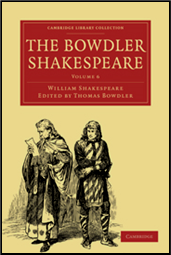 xxxxx…… Manyxyears later, 1807 in fact, an English doctor and writer Thomas Bowdler (1754-
xxxxx…… Manyxyears later, 1807 in fact, an English doctor and writer Thomas Bowdler (1754-



